4.1 Connecting Cables to the SPARC M10-4
4.1 Connecting Cables to the SPARC M10-4
This section describes the procedure for connecting the serial cable, network cables, and power cords to the SPARC M10-4.
- Connect the serial cable supplied with the chassis from the serial port of the XSCF unit (A in Figure 4-1) to the system management terminal.
|
Figure 4-1 Serial port location
|
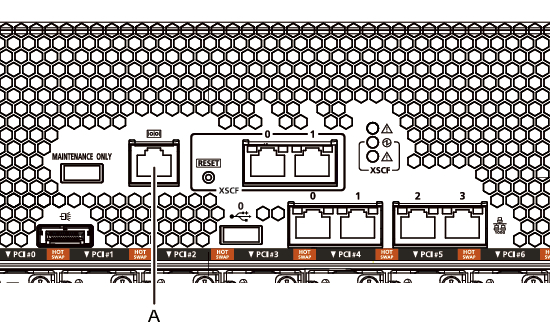
|
- Connect a LAN cable of Category 5 or higher from a GbE port (A in Figure 4-2) to the network switch or hub.
The GbE ports are used for the user network. Connect the other servers, other PCs, UPS, etc. that are necessary for business via the network switch or hub.
|
Figure 4-2 GbE port locations
|
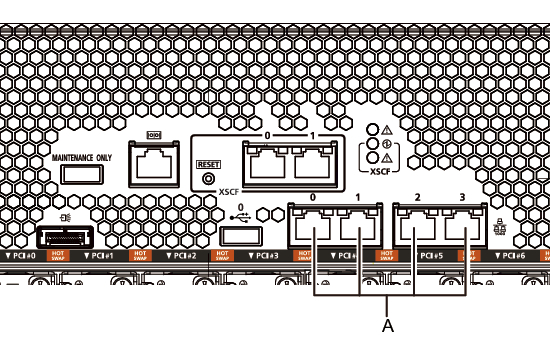
|
- If a PCIe card is mounted, connect a LAN cable and I/O cable to the respective ports on the PCIe card.
- Secure the cables to the cable support.
While leaving extra length, secure the cables connected to the PCIe card to the cable support. - Connect the supplied power cords to the power supply units (A in Figure 4-3).
Insert the power cords straight into the power supply units all the way.
|
Figure 4-3 Power supply unit locations
|
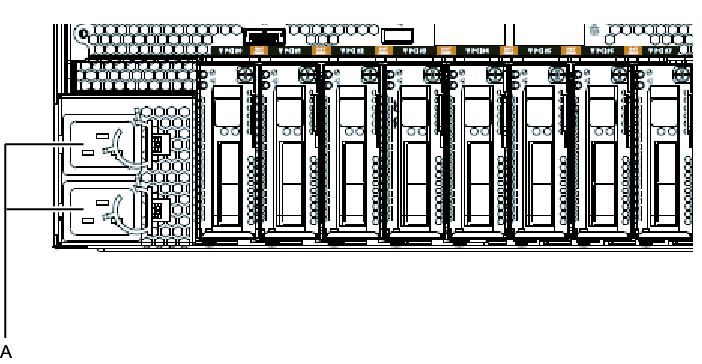
|
| Note - Do not connect to an outlet at this point. |
|
Figure 4-4 Inserting power cords
|
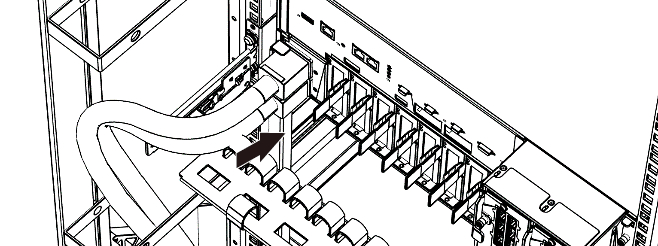
|
- Secure all the power cords with cable clamps.
Clip on the power cords to the cable clamps, and secure the cable clamps.
After locking each clasp (A in Figure 4-5), push the cable clamp toward the front of the chassis to firmly secure the clamp.
|
Figure 4-5 Locking a cable clamp
|
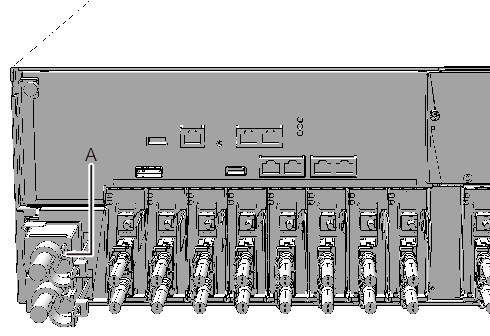
|
- Hang the power cords from the left side as viewed from the rear of the rack.
Place the power cords over the cable support fixing bracket to hang them there as is. - Bundle the power cords together with hook-and-loop fastener strips.
| Note - When bundling the power cords together with hook-and-loop fastener strips, take care to secure the extra length necessary for removing the power cords inserted in the power supply units. |
< Previous Page | Next Page >